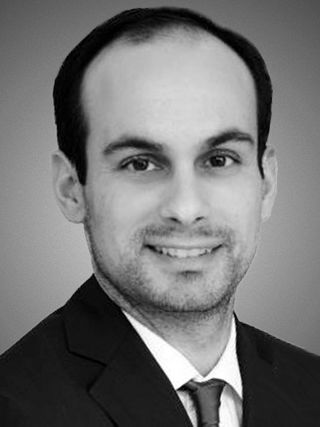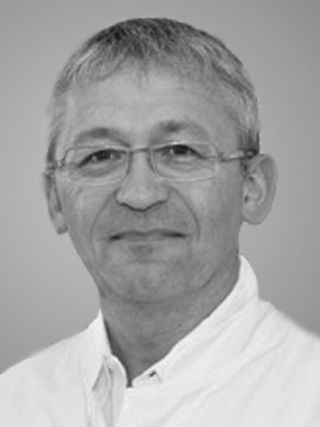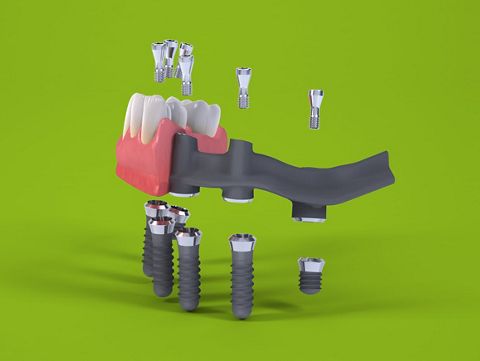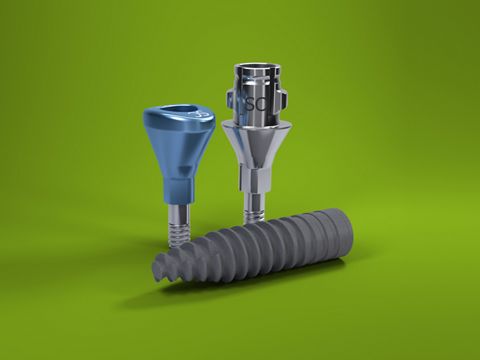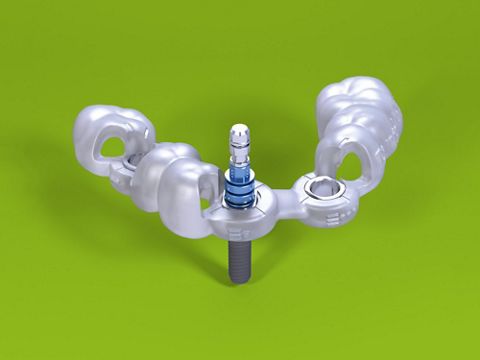A Straumann® Pro Arch full-guided treatment for the edentulous mandible: a proof-of-principle report and technical note
A clinical case report by Christos Alamanos and Reinhold Lang (University Medical Center Regensburg, Germany)
Since 2015, the Straumann® Pro Arch portfolio in synergy with the Bone Level Tapered (BLT) Implant, has provided an accelerated and comprehensive solution for the rehabilitation of the terminal dentition and edentulism with fixed, full-arch tooth replacement. In this clinical case report we demonstrate the feasibility and accuracy of a full-guided Pro Arch treatment in a patient with partial edentulism in the lower jaw. For this purpose, we combined the Straumann® guided surgery workflow supported by the coDiagnostiX™ software (Dental Wings Inc., Straumann Group) with the conventional Pro Arch surgical and prosthetic protocols.
Initial situation
A 65-year-old non-smoking male patient presented at the Department of Prosthodontics, University Medical Center Regensburg, with an ill-fitting double-crown-retained overdenture on tooth #33 in the lower jaw and fixed dental prostheses in the opposing arch. The patient asked for his lower dentition to be restored with a fixed dental prosthesis. His past medical history was unremarkable. The clinical and radiological examination revealed a peri-radicular infection and secondary caries on tooth #33, which was therefore considered as irrational to treat (Figs. 1-6). The fixed dental prostheses were evaluated as insufficient but, in view of the patient's financial constraints, it was decided to remake these at a later date. The occlusion was insufficient and showed heavy anterior contacts and non-occlusion on the posterior sites, but the occlusal plane was considered acceptable (Figs. 1-3).
Treatment planning
To meet patient's expectations, it was decided to place four interforaminal implants at sites #32, #34, #42 and #44 following the Straumann® Pro Arch protocol for delivering a screw-retained fixed restoration, thereby avoiding the need for expensive and time-consuming alternative treatments involving demanding surgical procedures in the posterior segments. To facilitate a more efficient conversion of the available denture into an immediate temporary fixed restoration in the lab, it was decided to follow a full-guided surgical workflow, which was supported by the coDiagnostiX™ software (Dental Wings Inc., Straumann Group). This workflow improves the precision of implant placement and increases the AP spread by tilting the distal implants either at 17° or at 30°, still without interfering with the mental nerves. The preliminary records needed to deliver this treatment included a radiographic template, by means of a duplicate denture with radiopaque teeth and a CT scan of the lower jaw with the template (Figs. 7-8). The integration of the tooth setup in the treatment planning facilitated a prosthetic-driven implant placement. Due to the tilted posterior implants, it was important to use 30° angled screw-retained abutments (SRAs) to place the access channels on the occlusal surface of the temporary restoration (Fig. 9). Tooth #33 was planned to be extracted prior to implant placement because its root would impinge on the distally tilted implant #34. In the absence of any other anterior tooth support, the surgical guide was designed with anterior lateral anchoring to avoid any movement during implant bed preparation. The lateral preparations for the anchoring elements were realized by means of a first (or pilot) guide which was mucosa-tooth-borne and included an incisal window to check the seating (Figs. 10-11). For the implant bed preparation, we used a second (or main) drill guide, but this also kept the lateral sleeves in the same position (Neodent, Straumann Group) (Figs. 10-14).
Surgical procedure
The pilot surgical guide was used prior to the main surgical guide to facilitate a full-guided placement. The pilot guide was used for a flapless preparation of the sites to anchor the fixation pins. This guide was tooth-mucosa-supported. After checking the patency of the lateral preparations, the tooth was removed and the main drill guide was tried-in. As the pin positions were copied, the pin sleeves of the second guide retrieved the same positions obtained with the first guide. Before proceeding to the implant site development, a mid-crestal incision with a midline release was performed, and a full-thickness flap was reflected. Since the guide allowed for some mucosal clearance at the sites of flap reflection, it was only bone-supported in the anterior segments (Fig. 15). Site #44 revealed a bony defect which, after copious debridement, was reconstructed with a GBR procedure (Fig. 16). The lateral anchoring secured the drill guide against tilting during the whole implant site preparation. Finally, four Straumann® Bone Level Tapered SLActive implants (diameter 4.1 mm, length 12 mm) were inserted with the fully guided protocol at sites #32, #34, #42 and #44 and torqued to a minimum of 35 Ncm. Non-engaging temporary titanium cylinders were attached on the SRAs and the flap was sutured with 4-0 multifilament polyamide (Fig. 17).
Prosthetic procedure
Provisional restoration
In the lab, the dental technician retrofitted the main surgical guide on a preliminary cast to index the position and angulation of the future SRAs. The prosthesis was modified with perforations, to pick up the titanium copings chairside. The copings and their screw access channels were blocked-out respectively with rubber dam and Fit Checker™ (Fig. 18). The copings were secured intraorally with a self-curing composite (Quick-Up®, VOCO). The cylinders were disconnected from the SRAs, and the prosthesis was transferred to the lab for modification. During the lab procedure, PEEK copings were attached to the SRAs to counteract a tissue collapse and retain the access to the abutments (Fig. 19). A post-operative panoramic radiograph was taken at this stage (Fig. 20). The temporary restoration was configured with a "high water" design to allow for effective home care. Specifically, the tissue surface was given a convex contour and a high luster. Additionally, the arch was shortened to minimize the occlusal load on the implants during the initial healing period. The 11-unit screw-retained provisional was attached on the SRAs and the occlusal screws were torqued down to 15 Ncm, as required. The screw channels were sealed and the patient was rescheduled in one week and thereafter at four-weekly intervals (Figs. 21-22). The post-operative healing period was uneventful, and the patient was able to perform optimal oral hygiene as observed at the first month recall (Figs. 23-24).
Final restoration
An open-tray impression was performed at abutment level after a healing period of four months (Fig. 25). After assembling scan bodies on the NC/RC analogs for SRAs, the lab technician performed an optical scan and designed a 12-unit fixed dental prosthesis framework (Fig. 26). Modifications regarding the connectors' dimensions and the space for the veneering materials were performed with the Modellier software module. The final layout was exported to the CAM software module for production. A five-axis precision milling machine was used to fabricate a 12-unit nonprecious-alloy bridge framework (Figs. 27-30). The framework showed an exceptional marginal adaptation and passive fit (Figs. 31-32). The veneering procedure included surface conditioning (120µm sandblasting), layering (Duceram ceramics, Degudent) and several firing cycles. Pink ceramics were also layered to imitate the gingival structure. The final restoration was delivered and torqued to 15 Ncm. Screw access channels were sealed with Teflon tape and a light-curing, nano-hybrid composite (Tetric EvoCeram) (Figs. 33-35).
Treatment outcome
This case report demonstrates that the concept of immediate fixed full-arch tooth replacement assisted by guided surgery can provide exceptional accuracy and confidence to the surgeon. The potential of this workflow can be further enhanced, e.g. by means of a flapless approach or a CAD/CAM immediate temporization.
Acknowledgements
Laboratory procedures
Framework: Peter Brune, Brune und Fleischmann, Regenstauf
Porcelain Veneering: Olga Nosikowa, University Medical Center Regensburg
